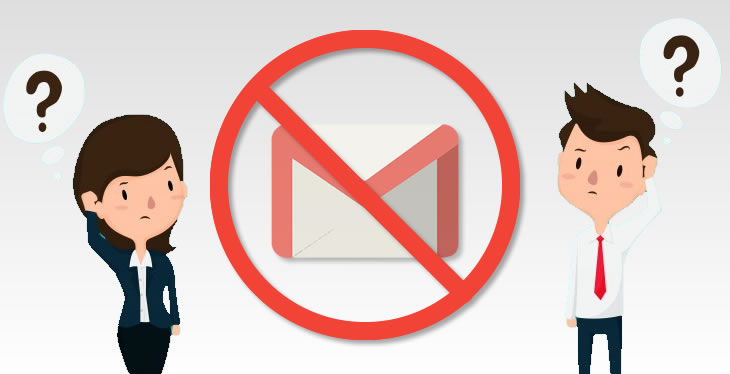What is Email Blockage

Email blockage refers to the situation where emails are stopped or prevented from reaching their intended recipients. This can happen for various reasons, often as a result of security measures, spam filters, or misconfigurations by email service providers (ESPs). When an email is blocked, it may never be delivered to the recipient’s inbox, or it might end up in their spam or junk folder without any notification to the sender.
Table of Contents
10 Common Reasons for Email Blockage (and How to Avoid It)
Email blockage occurs when emails are stopped from reaching their intended recipients. Understanding the reasons behind it can help you avoid communication issues. Here are 10 common causes of email blockage and how to prevent them:
1. Blacklisted IP Address
Cause:
Your IP address might be blacklisted if flagged for sending spam or harmful emails. This can occur if you’re sharing a server with other users who engage in bad practices.
How to Avoid:
- Use tools like MXToolbox to regularly check your IP reputation.
- Implement proper email authentication with SPF, DKIM, and DMARC.
- Use dedicated IP addresses, if possible, especially for business email.
2. Improper DNS Configuration (SPF, DKIM, DMARC)
Cause:
Incorrect or missing DNS records (SPF, DKIM, or DMARC) can lead to receiving servers rejecting or blocking your emails.
How to Avoid:
- Configure and verify SPF, DKIM, and DMARC records correctly in your DNS settings.
- Use tools like DNSstuff to ensure your records are accurate and active.
3. Spammy or Suspicious Content
Cause:
Using certain keywords, poor formatting, or too many links in your emails can trigger spam filters, causing email blockage.
How to Avoid:
- Avoid spammy language like “limited time offer,” “act now,” or too many exclamation points.
- Keep the number of links and attachments low and ensure they are relevant and safe.
- Use an email marketing tool that checks content against spam filters before sending.
4. Sending Emails to Invalid Addresses
Cause:
If you frequently send emails to invalid or non-existent addresses, it can raise red flags with email service providers, leading to your emails being blocked.
How to Avoid:
- Regularly clean your email lists and remove inactive or invalid contacts.
- Use email verification tools like Never Bounce or Zero Bounce to validate email addresses before sending.
5. High Bounce Rate
Cause:
A high bounce rate (when emails are undeliverable due to invalid addresses or full inboxes) negatively affects your sender reputation, which can lead to blockage.
How to Avoid:
- Monitor and lower your bounce rate by keeping your email list clean and using verified addresses.
- Pay attention to bounce-back messages and remove addresses that repeatedly fail.
6. Poor IP Reputation (Shared Hosting)
Cause:
If you’re on a shared server, the IP address is shared among many users. If one user engages in spammy behavior, the entire IP can be blacklisted, affecting your email deliverability.
How to Avoid:
- Use a dedicated IP or upgrade to VPS or dedicated hosting for better control.
- Regularly monitor the IP reputation with tools like Sender Score.
7. Exceeding Sending Limits
Cause:
Many email service providers impose sending limits, especially for free accounts or shared hosting plans. Exceeding these limits can result in emails being temporarily blocked.
How to Avoid:
- Be aware of your provider’s sending limits and upgrade your plan if necessary.
- Use an email service designed for bulk email sending, such as Amazon SES or SendGrid, if you regularly send a large number of emails.
8. Unverified Free Email Domains
Cause:
Using free email services (Gmail, Yahoo, etc.) for business or bulk emailing can result in higher chances of your emails being flagged as spam or blocked entirely.
How to Avoid:
- Use a custom domain (e.g., example@yourcompany.com) for professional or business communications.
- Set up proper authentication methods for your domain to improve trustworthiness.
9. Suspicious Attachments or Links
Cause:
Attachments and links can be flagged as unsafe, leading to email blockage, especially if they are large, encrypted, or linked to untrusted domains.
How to Avoid:
- Avoid sending large attachments. Instead, use cloud services like Google Drive or Dropbox to share files.
- Ensure all links and attachments come from reputable and secure sources.
- Use link-shortening services with caution as they may appear suspicious to email filters.
10. Sending Too Frequently or Irregularly
Cause:
Sending too many emails in a short time or irregular email patterns can signal spammy behavior, causing emails to be blocked by ESPs.
How to Avoid:
- Send emails consistently but in moderation. Avoid sending too many emails too quickly, which may trigger filters.
- Use email-sending tools to help space out your emails and prevent flooding your recipients.
General Tips to Avoid Email Blockage:
- Stay compliant with email laws: Follow GDPR and CAN-SPAM regulations to ensure proper email practices.
- Use a reputable email service: Consider specialized email providers with strong reputations for deliverability.
- Regularly monitor your email performance: Use tools to check your sender score and keep an eye on bounce rates and deliverability.
By following these best practices, you can significantly reduce the chances of email blockage and improve your overall email deliverability.
